The document is a notice and proxy statement for General Electric's 2006 Annual Meeting. It provides details on the meeting such as the date, time, and location in Philadelphia. It lists 15 nominees for election to the board of directors and provides brief biographies for each. It also lists several matters that will be voted on including the election of directors, ratification of the independent auditor, and six shareholder proposals.
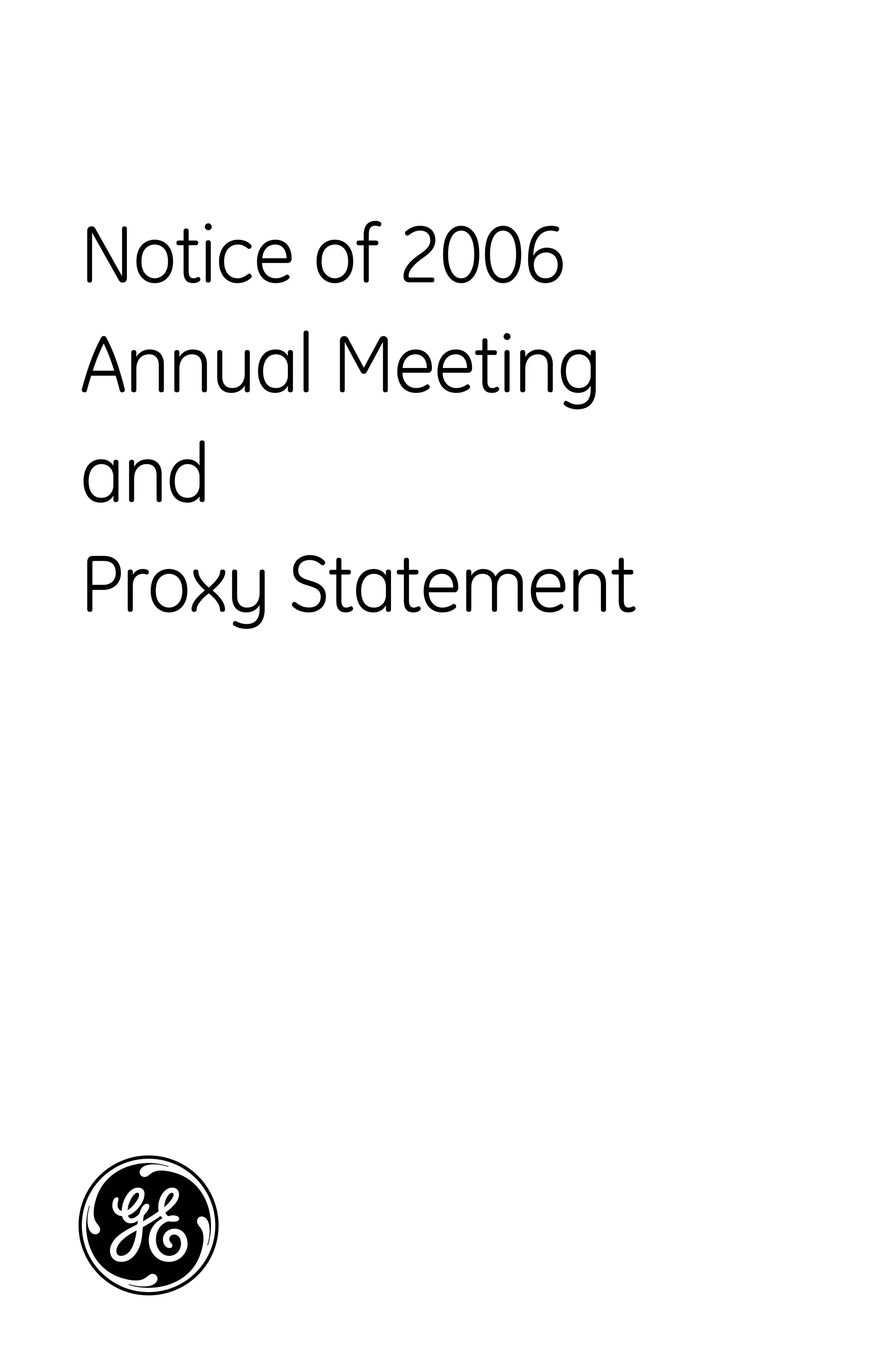




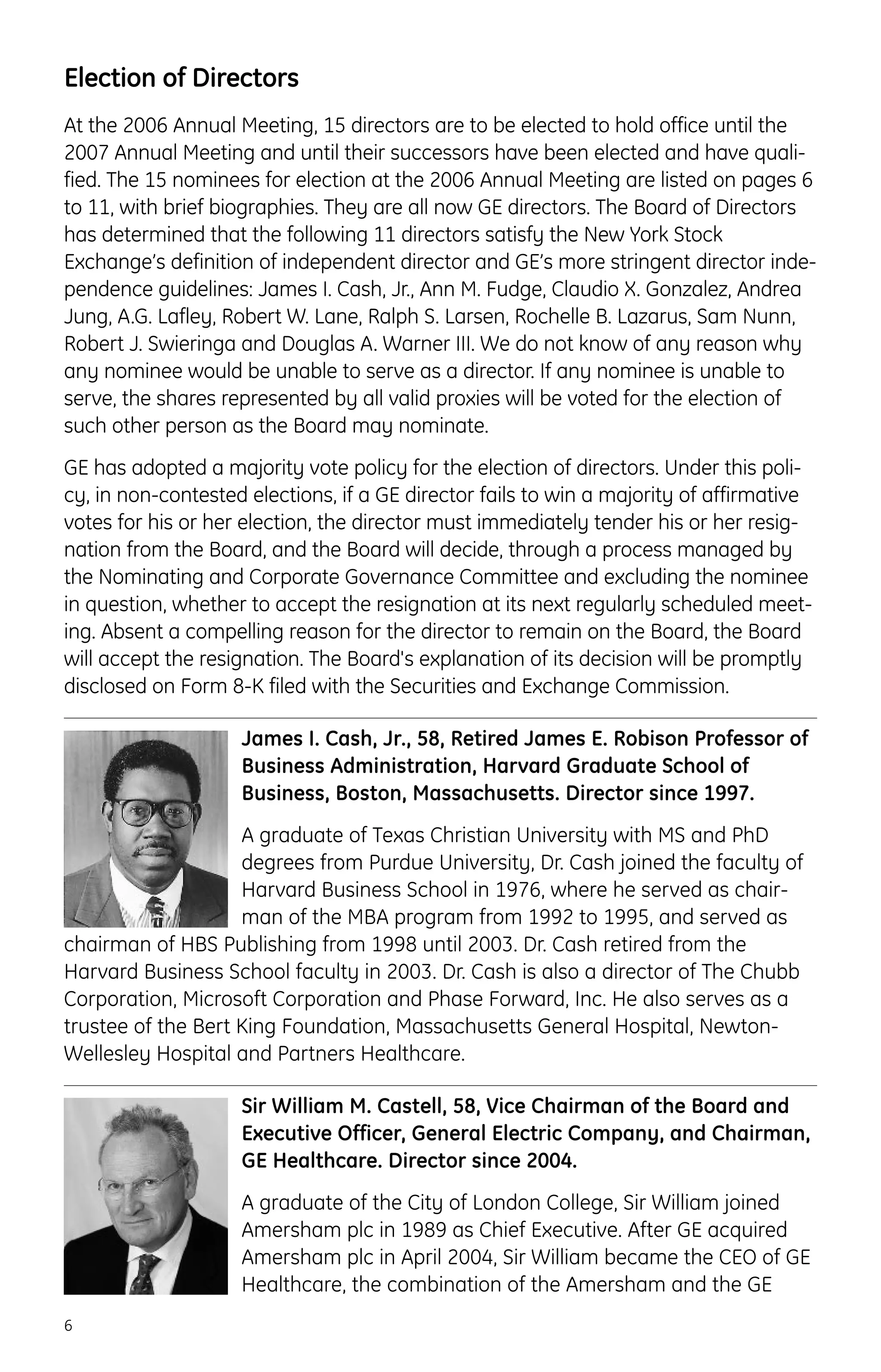
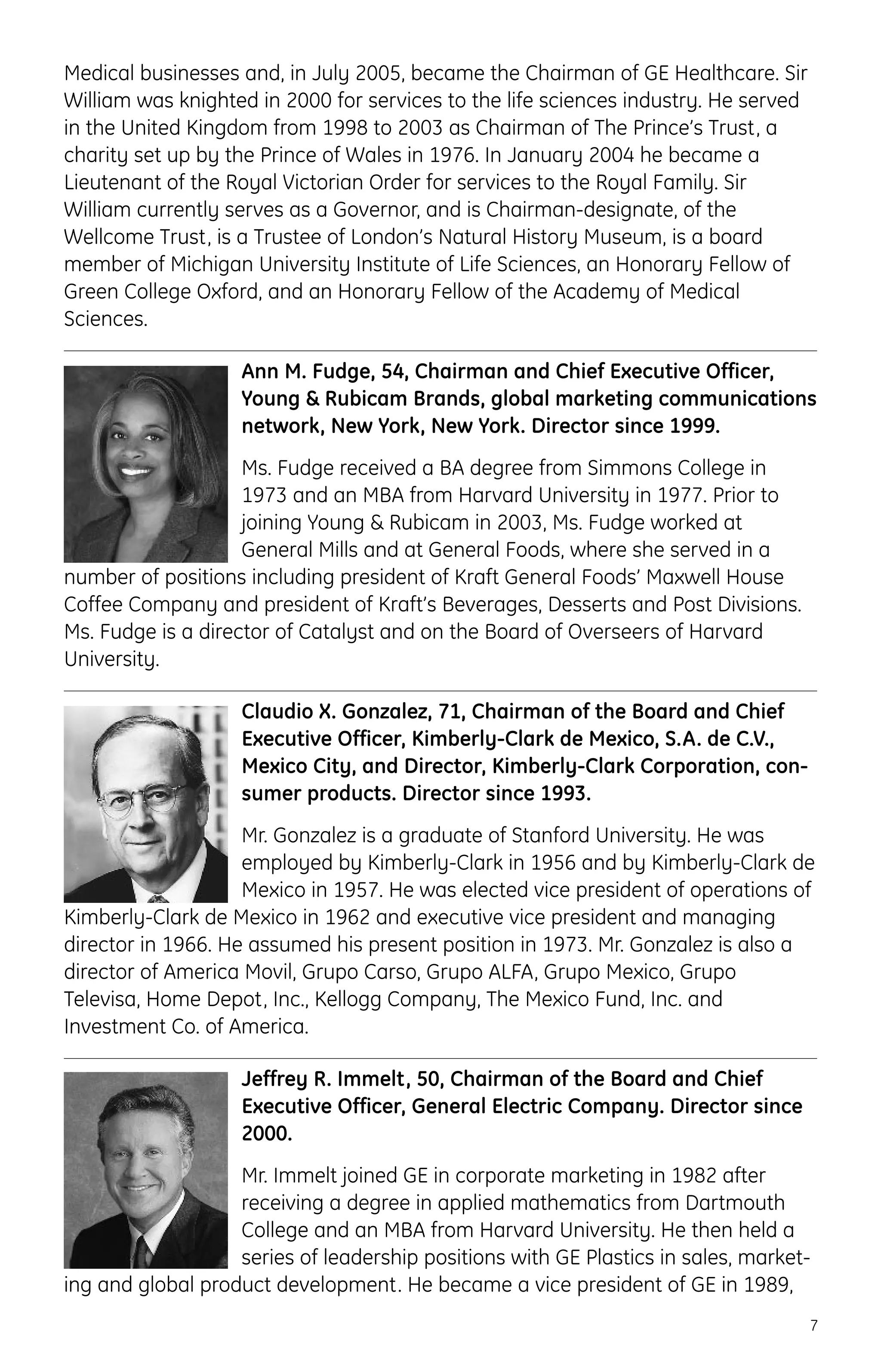








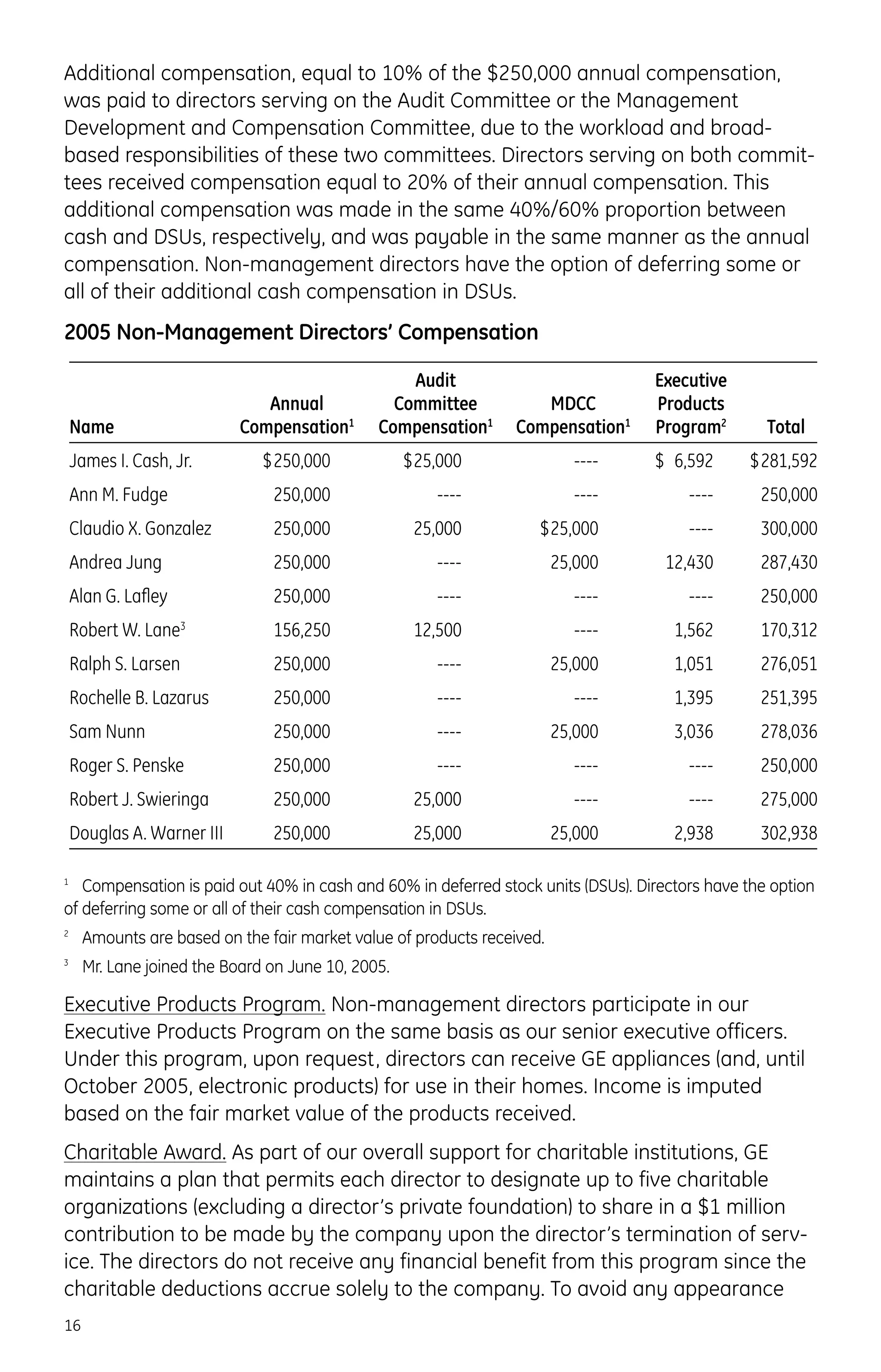
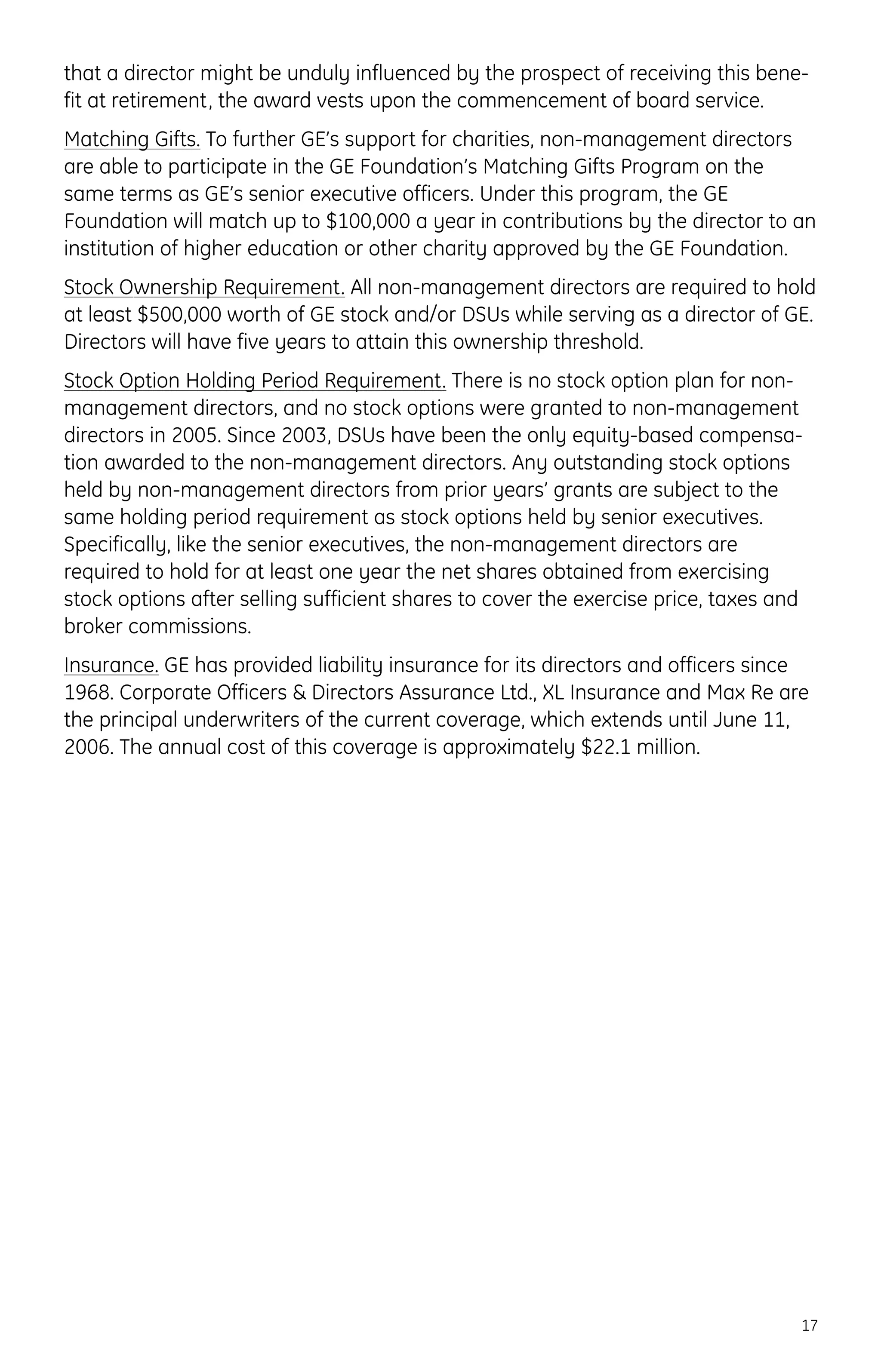






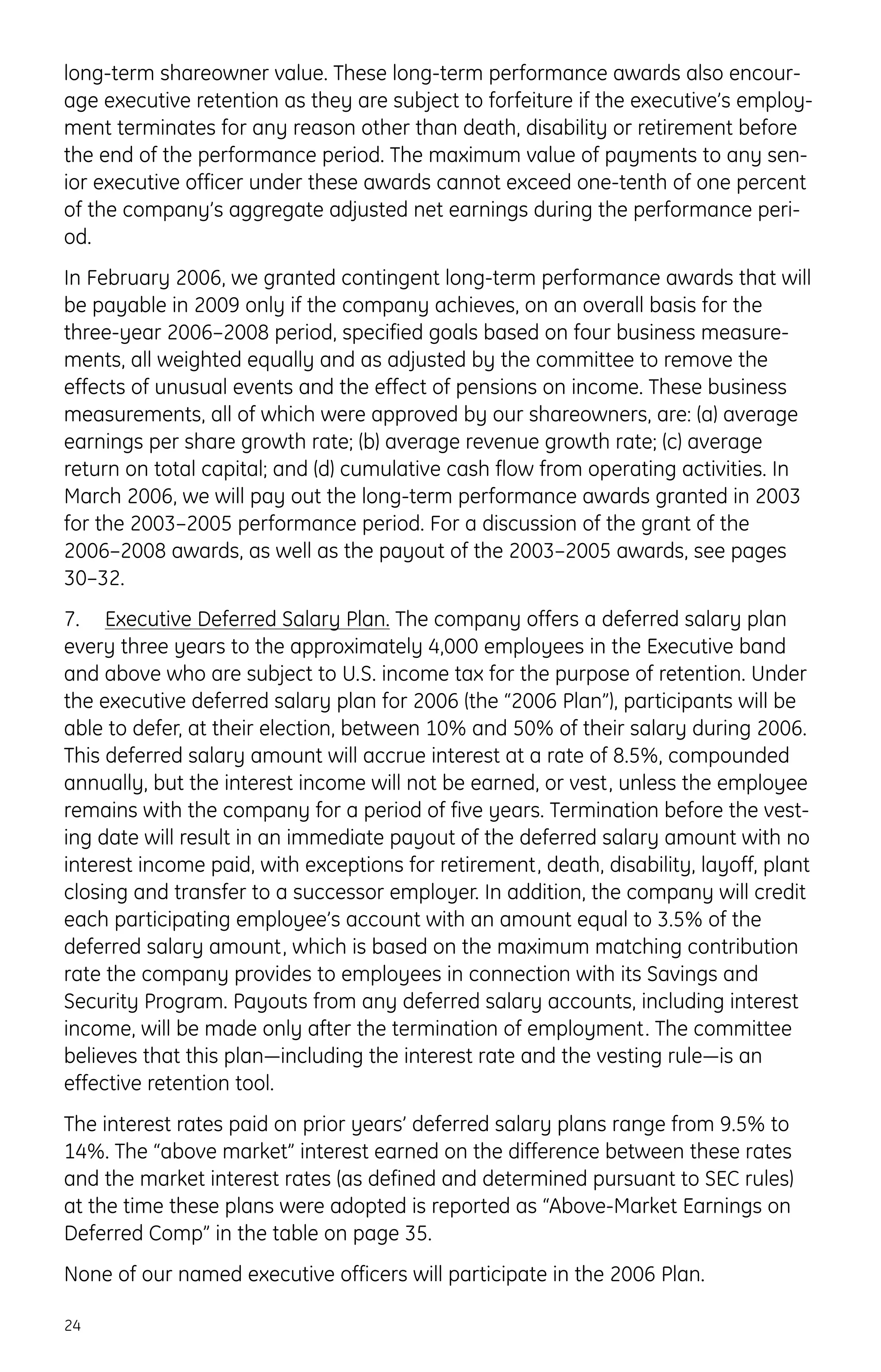























![decide, through a process managed by the Nominating and Corporate Governance
Committee and excluding the nominee in question, whether to accept the resigna-
tion at its next regularly scheduled Board meeting. Absent a compelling reason for
the director to remain on the Board, the Board will accept the resignation. The
Board’s explanation of its decision will be promptly disclosed on an SEC Form 8-K.
We believe that our policy gives shareowners a stronger role in the election of
directors by providing that, in the absence of a compelling reason, a director will
not continue to hold office if he or she fails to receive a majority of affirmative
votes at the annual meeting. We also believe that implementing this policy through
our Governance Principles is preferable to amending our certificate of incorpora-
tion for a number of reasons. Most importantly, our policy addresses the conse-
quence of an incumbent director nominee who fails to receive a majority vote. If
we were to put in place a majority election provision as requested under the pro-
posal, this incumbent director could continue to serve as a director, possibly until
the next annual meeting, unless we held a special election of directors. In contrast,
under our policy, this incumbent director would be required to submit his or her
resignation immediately, and through a process managed by the Nominating and
Corporate Governance Committee and excluding the nominee in question, the
Board would accept his or her resignation at its next regularly scheduled meeting
(which occurs no later than 60 days from the annual meeting) absent a compelling
reason for the director to remain on the Board, which would be publicly disclosed.
Our policy’s “compelling reason” standard means that the Board has the flexibility
to reject a resignation only in truly exceptional circumstances. Moreover, by imple-
menting this policy through our Governance Principles, we have been able to act
quickly on this emerging governance issue so that it is in place for the 2006 annual
meeting. We will continue to monitor developments in this area.
We believe that our majority vote policy demonstrates our accountability to the
company’s shareowners and ongoing commitment to good governance. We there-
fore recommend a vote against this proposal.
• Shareowner Proposal No. 6 – Report on Global Warming Science
Thomas J. Borelli, 173 Oakland Avenue, Eastchester, NY 10709, has notified us that
either he or his representative, Steven J. Milloy, intends to present the following
proposal at this year’s meeting:
“Whereas:
“GE’s main responsibility is to create shareholder value. Company policy should
be based on sound scientific and economic analyses and not appeasement of
external activist groups. Policy based on faulty analyses or external pressure may
reduce shareholder value. [See http://www.FreeEnterpriseActionFund.com.]
“Whereas:
“Calls to mitigate alleged manmade climate change rely on suppositions that
manmade greenhouse gas (GHG) emissions significantly impact global climate;
that such climate change will necessarily be undesirable; and that cost-effective
action can mitigate undesirable climate change.
48](https://image.slidesharecdn.com/1006861/75/GE-2006-Proxy-Statement-48-2048.jpg)
![“Whereas:
“The GE 2005 Citizenship Report states that GE strives to base its public policy
positions on sound facts, detailed analysis and consideration of competing values,
and that GHG emissions need to be reduced around the world.
“GE’s Ecomagination initiative is partly based on the supposition that human
activity harms global climate and that GHG emissions reductions will mitigate harm.
“Ecomagination’s public roll-out included the Word Resources Institute, an envi-
ronmental organization supporting GHG emission reductions.
“Resolved: That, by the 2006 annual shareholder meeting, the Board of Directors
report to shareholders on the scientific and economic analyses relevant to GE’s cli-
mate change policy, omitting proprietary information and at reasonable cost.
“This report should discuss the:
“1. Specific scientific data and studies relied on to formulate GE’s climate
change policy.
“2. Extent to which GE believes human activity will significantly alter global cli-
mate, whether such change is necessarily undesirable and whether a cost-
effective strategy for mitigating any undesirable change is practical.
“3. Estimates of costs and benefits to GE of its climate change policy.
“Supporting Statement:
“Climate varies significantly because of natural causes. [National Academy of
Sciences (NAS), Natural Climate Variability on Decade-to-Century Time Scales,
1995.] Twentieth century temperature trends do not correlate well with concurrent
trends in manmade GHG emissions. [Sallie Baliunas, Lecture #758, Heritage
Foundation, http://www.heritage.org/Research/EnergyandEnvironment/HL758.cfm.]
“The mathematical models that attempt to predict future climate change
resulting from manmade GHG emissions have not been validated against historical
climate data [NAS, Reconciling Observations of Global Temperature Change, 2000.]
No existing model predicts future global climate with certainty [NAS, Radiative
Forcing of Climate Change: Expanding the Concept and Addressing Uncertainties,
2005.]
“Warm periods are historically associated with human development and pros-
perity. The Vikings thrived in Greenland until the 14th century cold period known as
the ‘Little Ice Age,’ when they abandoned settlements because of encroaching sea
ice. The Little Ice Age persisted until the 19th Century and immediately preceded
the current warming trend. [NAS 1995.]
“The required GHG emission reductions of the Kyoto Protocol may ‘avoid’ just a
few hundredths of one degree Centigrade of warming through 2050 at an estimat-
ed cost of 0.2% to 2% of GDP per year. [United Nations, Third Assessment Report,
2001.]
“The U.S. Senate has rejected mandatory limits on manmade GHG emissions as
being too costly relative to uncertain benefits.”
Our Board of Directors recommends a vote AGAINST this proposal.
GE’s ecomagination initiative is part of management’s strategy to respond to the
needs of GE customers for technological solutions to environmental regulatory
49](https://image.slidesharecdn.com/1006861/75/GE-2006-Proxy-Statement-49-2048.jpg)

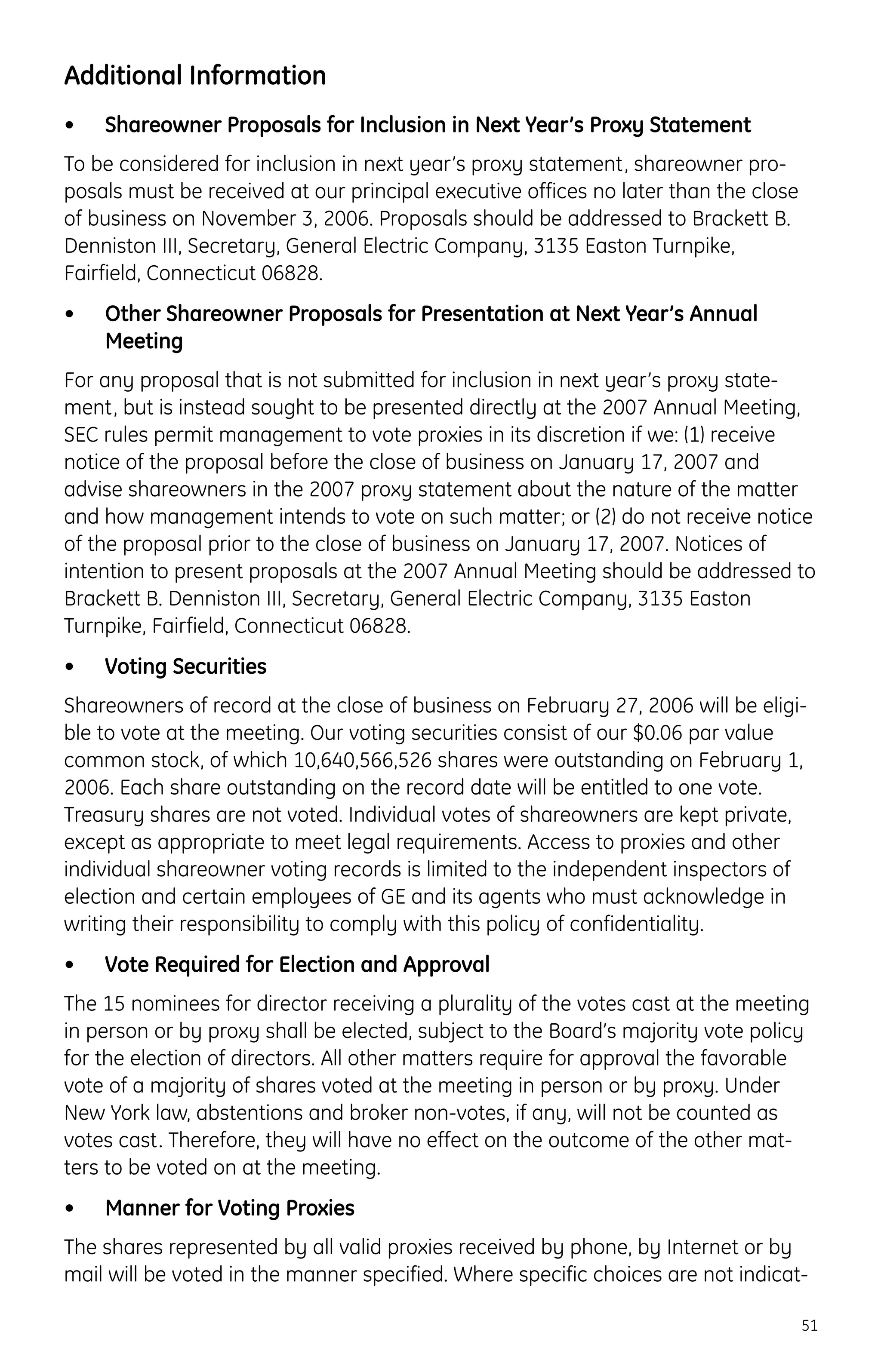

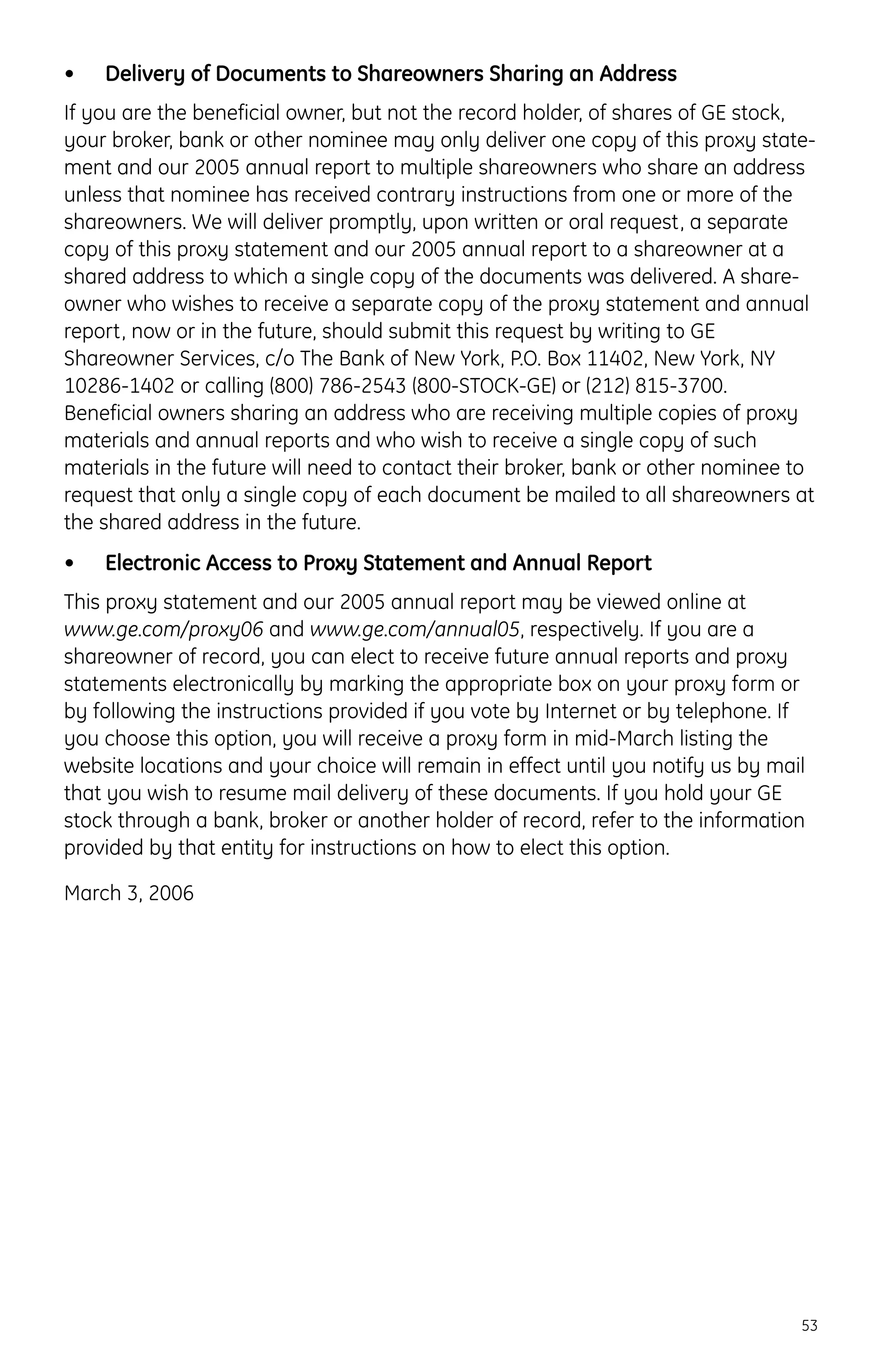





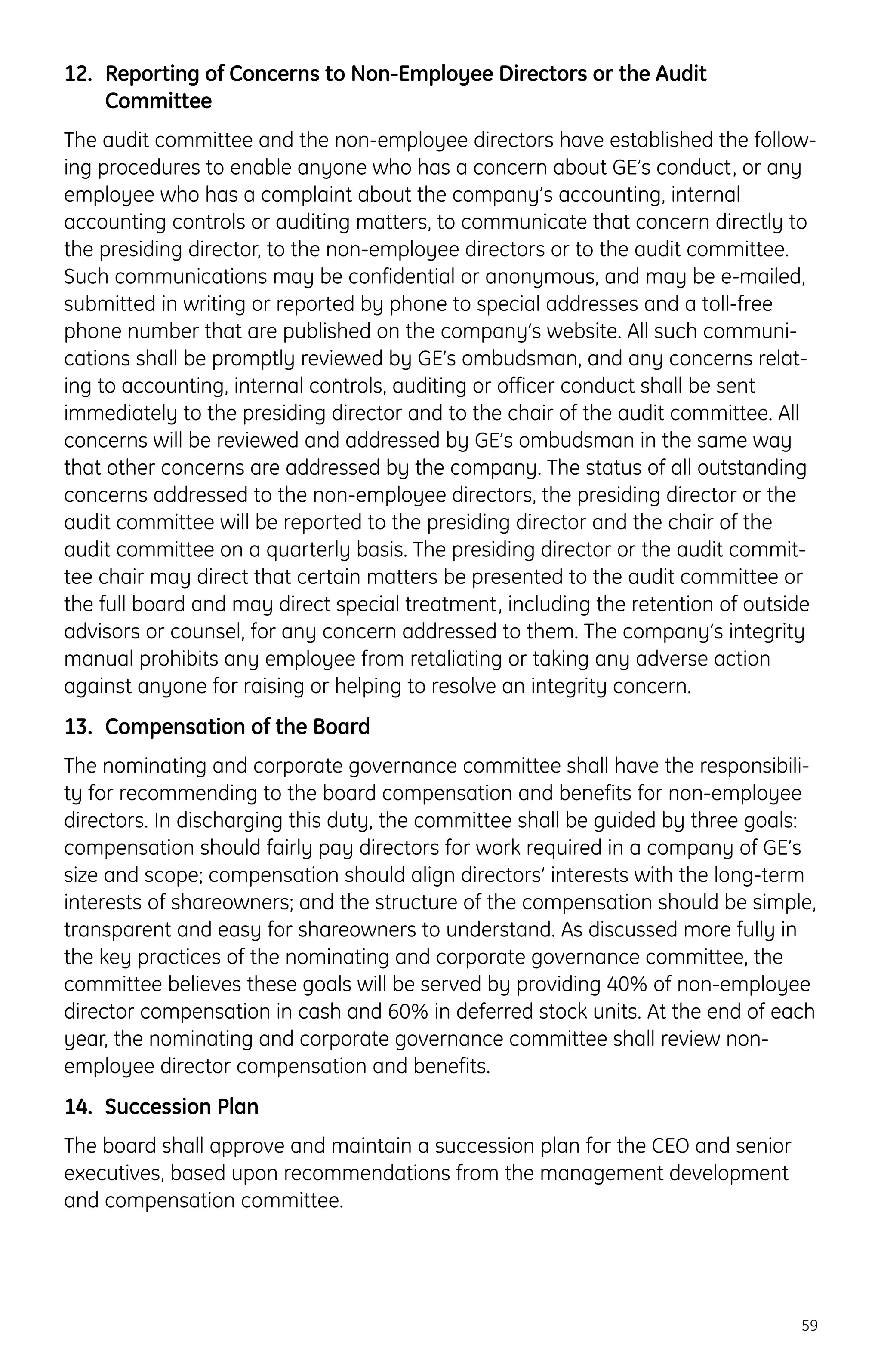
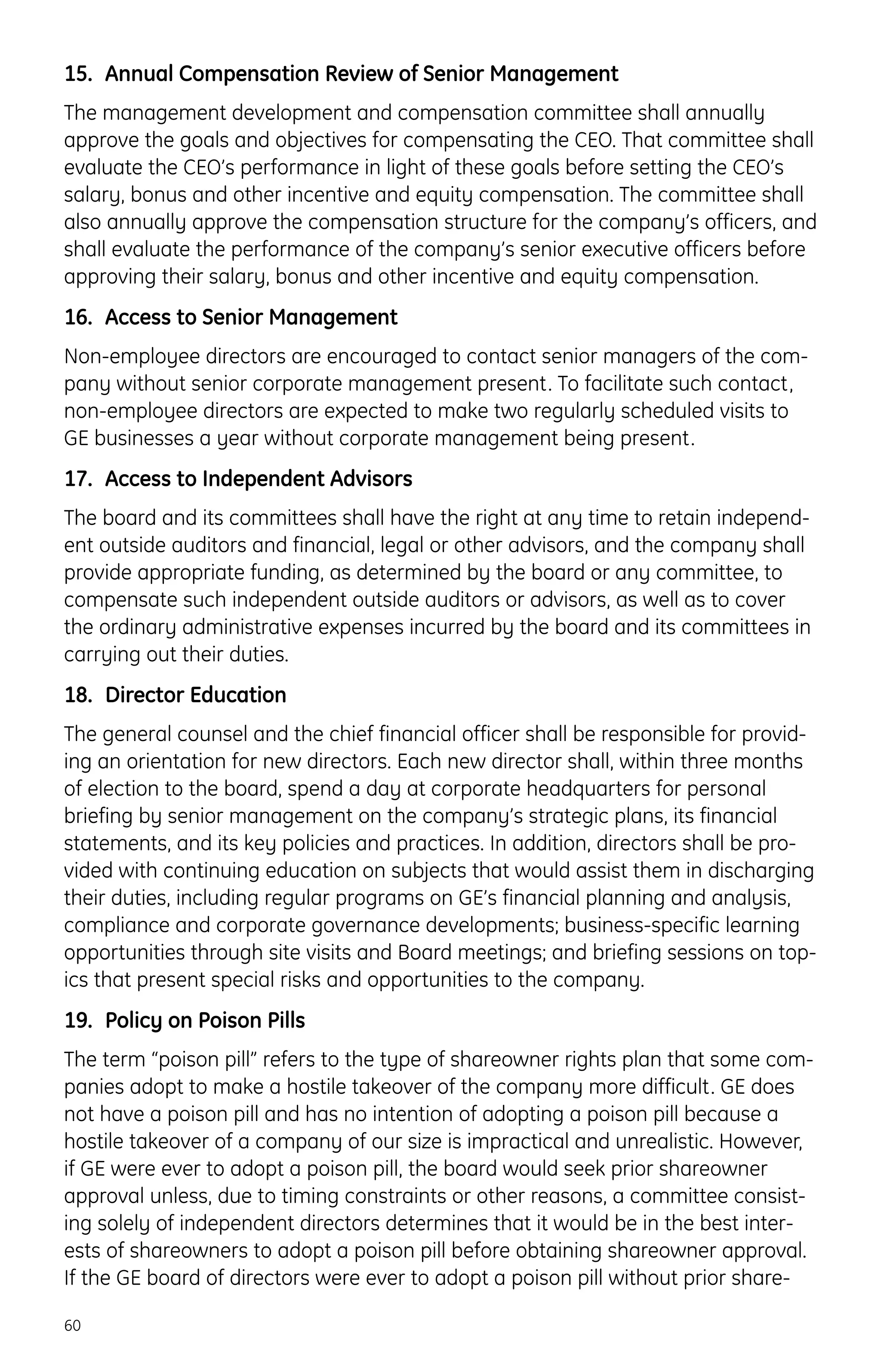
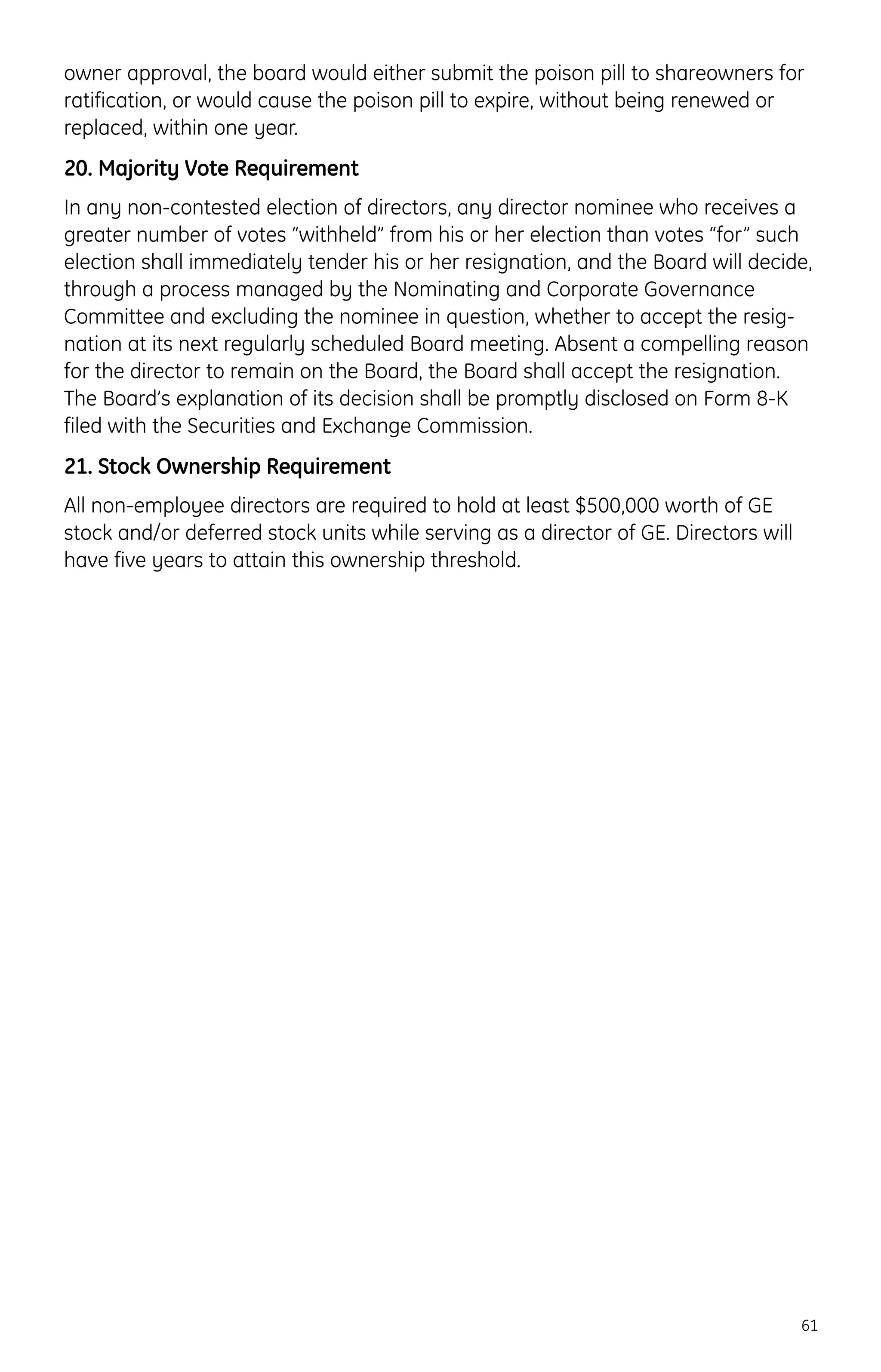
![[This page intentionally left blank.]
62](https://image.slidesharecdn.com/1006861/75/GE-2006-Proxy-Statement-62-2048.jpg)
![[This page intentionally left blank.]
63](https://image.slidesharecdn.com/1006861/75/GE-2006-Proxy-Statement-63-2048.jpg)
